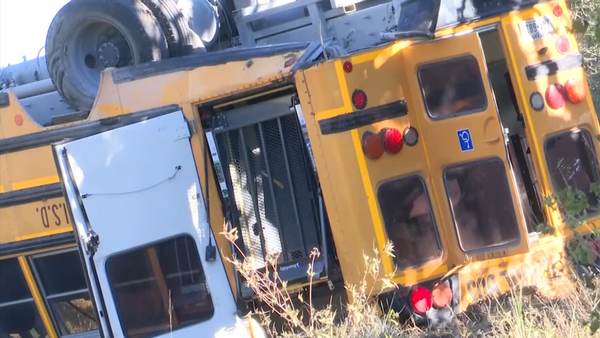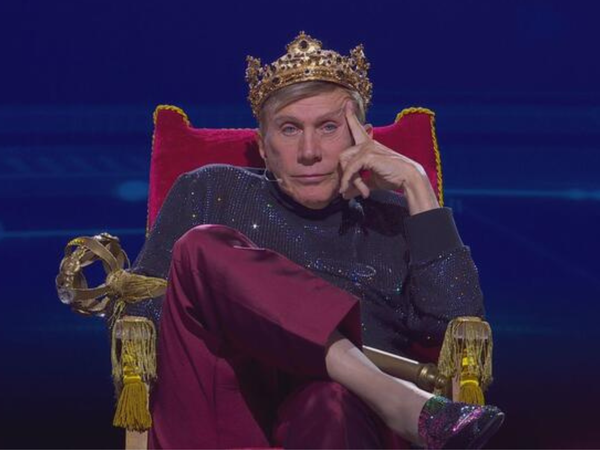
First, the facts. What we’re talking about is video footage of the violent assault of a bishop at a church in Western Sydney, during which he was stabbed some six times. I haven’t seen it, but I understand it is graphic and, of course, distressing. It triggered a riot.
The facts include context: a city already on edge after the Bondi mass murder two days earlier, compounding a deeply fraught social fabric in which division on racial/religious grounds hasn’t been so marked for many decades.
Julie Inman Grant, the federal eSafety commissioner, decided to use the wide powers she has been given, determining that the footage qualifies as “class 1 material” under the Online Safety Act — material that depicts gratuitous or offensive violence with a high degree of impact or detail.
Inman Grant issued notices to social media giants Meta and X, requiring them to remove the footage from their platforms. Meta complied. X said it had too, but the commissioner was not satisfied. According to her lawyers, X had only geo-blocked the material, so that Australian users can’t see it, but anyone with a VPN can get around that as it remains available outside the country.
So came the unprecedented spectacle of the commissioner dragging a tech billionaire into the Federal Court, which on Monday night granted a two-day injunction ordering X to “hide” the material so that users cannot see it. X wasn’t ready to argue the legalities in court, so that is happening on Wednesday.
One aspect of the legal fight is clear: X will argue that the eSafety commissioner’s take-down powers cannot extend extra-territorially, for lack of legal power. This is not an uncommon issue; long and boring submissions will be made regarding whether the legislation is designed to operate outside Australia, and whether the constitutional power for it to do so even exists.
Partly that is a question of enforceability — the courts are loathe to make orders they can’t enforce. It also begs an obvious problem: if our law can force X to take down content globally, why can’t every other country do the same? How would we like our social media feeds to be censored by China, Russia or Myanmar? We can’t expect the platforms to decide which countries’ laws to obey.
So that’s a pickle for the courts to work out. Inman Grant will be well alive to it and has no doubt been waiting for a good test case to flush the issue out. She now has it, along with a cartoon villain in Elon Musk as her adversary.
The real battle, of course, is in a different court, and that’s being fought ferociously. Musk is calling Inman Grant the “Australian censorship commissioner” — Trumpian, except with more syllables than the Donald could manage.
Our political class is, in its highest level of collective dudgeon, unified in disapprobation of Musk and his defiance and declaiming loudly about nobody being above our law. They’re being backed in by the mainstream media, happy to take a free kick at Musk while it’s on offer.
The alternative view was well put by Crikey’s Bernard Keane: “Why should the video of the attack … be taken down? It wasn’t posted by the perpetrator with the goal of glorifying or incentivising his heinous act … but resulted from the routine livestreaming of a religious service”.
Keane went on to point to the footage’s “innate news value” and what he sees as “the logic of Inman Grant’s position — that footage of an unsuccessful stabbing attempt must be taken down to ‘protect’ Australians — surely means that even relatively innocuous footage of violence should be removed”.
I agree with Keane’s point about the hypocrisy of our corporate media’s criticism of Musk when its own business model has always been based on the principle that what bleeds, leads. It disgraces itself regularly in its gratuitous exploitation of horror and degradation.
However, I don’t agree that Inman Grant is overreaching or wrong (in principle, regardless of where the law lands). The “what about” argument that mainstream media is no better than social media is really a plea that, because one media sector is poorly regulated, they all should be. It’s not a good comparison anyway; what you can see on social media is a billion times worse than anything even the least responsible media publisher would release into the world.
I also don’t understand what relevance either the provenance of the video footage (that it was filmed by a third party, not a perpetrator) or the motivation behind its creation or posting has to the questions Inman Grant is mandated to answer.
As to whether it has news value, yes, as does any physical evidence of a significant public incident, but that has never been the test for whether something is fit for publication. This is where context is most relevant — the film may be okay years down the track for viewing as a historical artefact, but not now in the moment.
The reason the eSafety regime was established was recognition that an unregulated digital world is a sewer, disguised as a toy store. Only the Ralph Babets of the world will seriously argue the extreme libertarian position, although when the good senator reposted the footage on his own X feed yesterday, with a caption telling the government and commissioner to “go fuck yourselves”, he comfortably defeated himself without the need for anyone else’s intervention.
As with extreme hate speech and speech that incites violence, the critical element is not the intention of the person who made the content or posted it, but the nature and effect of the content itself.
It seems to me that Inman Grant correctly discerned that, regardless of its origin, this film is of the worst category of content, carrying a social risk that was literally enacted within minutes of its first going viral.
Free speech has limits, and this film sits outside them.
Do you agree the video should be censored? Where, if anywhere, does our right to free speech end? Let us know your thoughts by writing to letters@crikey.com.au. Please include your full name to be considered for publication. We reserve the right to edit for length and clarity.







